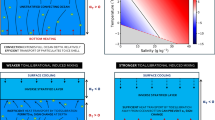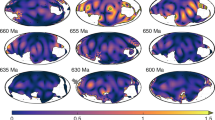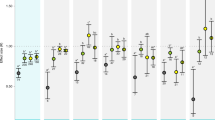Abstract
IN equation (26) of a paper in the current number of the Proceedings of the Royal Society (93 A, pp. 34859) Mr. R. O. Street has given an expression for the rate of dissipation of energy in the oceanic tides which is probably the best yet obtained; it is proportional to the square root of the viscosity and to the square of the surface velocity. In view, however, of the uncertainty of many of the data involved, which he carefully states, some further discussion of the subsequent numerical application seems desirable. At the end of the paper it is shown that a periodic surface velocity with a maximum of 2 ft. per second all over the ocean, with a viscosity of 1.4 × 10-5 ft..2/sec., would account for a retardation of the earth's rotation of amount 4 of arc per century per century. Now it is easy to find from equations (II) on p. 303 of Lamb's Hydrodynamic's that the surface velocity in mid-ocean for a tide of height 2 ft. is only of order 0.04 ft. per second; on the other hand, the effective viscosity is very much increased on account of turbulence. The available data on this question are scanty, but the writer has shown elsewhere (Monthly Notices of R.A.S., vol. lxxvi., 1916, p. 512) that the effective viscosity in the ocean is probably of order 4 cm.2/sec.=4.4 × 10-2 ft.2/sec. Thus Street's retardation must be multiplied by (0.02)2(300)½, giving 0.02′ per century per century, which is inappreciable. No great part of the observed lunar acceleration can therefore be attributed to tidal friction in mid-ocean. The dissipation in shallow regions near the coast may be greater, as fhe velocity is greater there, but in view of the limited area concerned the total is unlikely to be important. As the retardation of the earth's rotation that is required to account for the lunar acceleration is about 10′.4 per century ocr century (ibid., vol. lxxvii.; 1917, p. 453), Street's result on the whole confirms those of the earlier investigators, who regarded oceanic tidal friction as very small in amount, and were disposed to refer all the dissipation, if any, to the bodily tides.
This is a preview of subscription content, access via your institution
Access options
Subscribe to this journal
Receive 51 print issues and online access
$199.00 per year
only $3.90 per issue
Buy this article
- Purchase on SpringerLink
- Instant access to full article PDF
Prices may be subject to local taxes which are calculated during checkout
Similar content being viewed by others
Author information
Authors and Affiliations
Rights and permissions
About this article
Cite this article
JEFFREYS, H. Oceanic Tidal Friction . Nature 99, 405 (1917). https://doi.org/10.1038/099405a0
Issue date:
DOI: https://doi.org/10.1038/099405a0



